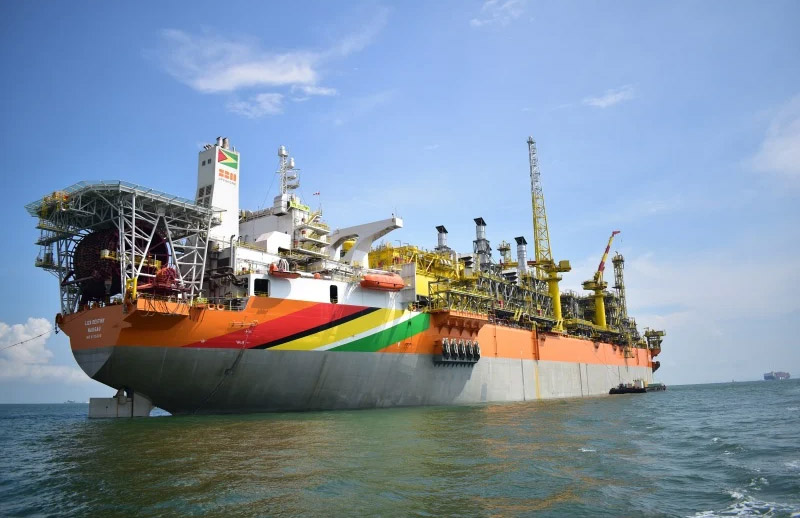ExxonMobil Guyana is celebrating the first year of oil production from the Liza field offshore and says it has reached full capacity of 120,000 barrels per day.
ExxonMobil had been beset by technical problems in meeting this target which saw large volumes of flaring of gas.
In a release yesterday, ExxonMobil said that earlier this month, the Liza Destiny floating production storage and offloading (FPSO) vessel reached full capacity of 120,000 barrels of oil per day and successfully commissioned the gas injection system.
ExxonMobil’s Public and Government Affairs Advisor Janelle Persaud told Stabroek News that flaring of gas is now down to “pilot levels”.
“As indicated in our press release (yesterday), we have been able to safely commission the gas compression and injection system on the Liza Destiny. The produced gas is now being reinjected or used to generate power onboard the vessel. In accordance with its design, there is no routine flaring at Liza Destiny.
“We have brought the flare down to pilot levels—less than one percent of the produced gas. It is important to note that flaring is a necessary safety control process conducted to consume excess hydrocarbons during activities, such as shutdown, start-up, commissioning and maintenance.
“ExxonMobil Guyana is disappointed by the equipment issues experienced which led to a longer than projected commissioning period of the gas injection system. We expect to reach and sustain a higher standard for our operations in Guyana and we’ve taken significant steps to incorporate lessons learned for future projects including FPSOs for Liza Phase 2 and Payara”, Persaud said.
The company began production less than five years after the first discovery of hydrocarbons, in the Stabroek Block in May 2015 which it said is well ahead of the industry average for deepwater developments.
“We are incredibly proud of the tremendous work of our team in overcoming the challenges of the past year and safely bringing us to where we are today,” said ExxonMobil Guyana President Alistair Routledge in the release.
“This resilient group, which includes a growing number of Guyanese professionals, continues to persevere through the COVID-19 pandemic and initial startup challenges to deliver a world-class project”, he added.
The release said that more than six thousand personnel have been transferred offshore without a safety incident or case of COVID-19 on the offshore facilities. Overall, the statement said that the Liza Destiny FPSO team has achieved one year and more than one million hours of work without a recordable safety incident.
“ExxonMobil Guyana is committed to the responsible development of the country’s natural resources and will not utilize routine flaring during our operations,” Routledge said.
“We are disappointed by the number of equipment issues experienced and that, because of these issues and COVID-19, commissioning of the gas injection system took longer than originally projected. We took significant steps to limit flaring and are incorporating lessons learned for future projects”, he added
Investment in the local economy continues to rise as the Liza Phase Two and Payara projects proceed. More than 2,100 Guyanese are now supporting activities on and offshore, the release said. It added that ExxonMobil and its key contractors have spent over $69 billion with more than 700 local companies since 2015.
The Liza and Payara developments are in the Stabroek Block, operated by ExxonMobil affiliate Esso Exploration and Production Guyana Limited which has a 45 percent interest in the Block. Hess Guyana Exploration Ltd. holds 30 percent interest and CNOOC Petroleum Guyana Limited, a wholly-owned subsidiary of CNOOC Limited, holds 25 percent interest.






